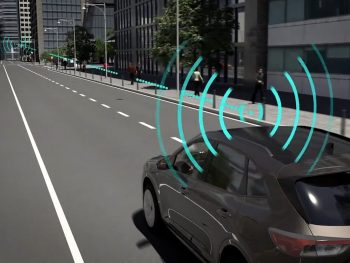Ford tests smart traffic lights that go green for emergency vehicles
Ford has trialled connected traffic light technology that clears a path for ambulances, fire engines and police vehicles.

The connected traffic light tech could speed up responses from emergency services while also reducing the risk of an accident caused by first responders driving through red lights
Tested as part of the Corridor for New Mobility Aachen-Düsseldorf (ACCorD) project, the tech could speed up responses from emergency services while also reducing the risk of an accident caused by first responders driving through red lights.
“Whether it’s a fire engine attending a blaze or an ambulance that is en route to an accident, the last thing anyone wants is for these drivers to be caught up among other vehicles waiting for the lights to change,” said Martin Sommer, research engineer, Automated Driving Europe, Ford of Europe.
A Ford Kuga Plug-In Hybrid test vehicle was fitted with onboard units for communicating with the infrastructure and rapid control prototyping hardware to enable the prototype software to be run.
Used on a road with eight consecutive traffic lights in Aachen, Germany, and two stretches with three consecutive traffic lights just outside the city, the vehicle acted as an ambulance and passenger vehicle in different test scenarios.
For testing an emergency response situation, the test vehicle signalled to the traffic lights to turn the light green. Once the vehicle passed through the junction, the traffic lights returned to standard operation.
The vehicle was also tested in conventional daily driving situations, which saw it receive the timing information for when the traffic lights turned from red to green and green to red. Ford’s Adaptive Cruise Control technology then adapted the vehicle’s speed to help ensure a higher proportion of traffic encountered a green light, while also enabling more efficient driving and less congestion while approaching a red light.
The system could also send the timing information for red and green lights to other vehicles to improve traffic flow for everyone.
The communication between vehicles and traffic lights was enabled by C-V2X (Cellular Vehicle-to-Everything) technology, a unified platform that connects vehicles to roadside infrastructure, other vehicles and other road users.
The trial was part of a major project to explore the benefits of bringing together automated and connected vehicles with networked infrastructure. Funded by the German Federal Ministry for Digital and Transport, the project was supported by RWTH University Aachen, Vodafone, Straßen.NRW (the road authority for North Rhine Westphalia) and the City of Aachen.
“Exchanging data between cars, emergency vehicles and traffic lights in real time using the latest mobile phone technology makes road traffic safer and more efficient,” said Michael Reinartz, director, Consumer Services and Innovation, Vodafone Germany. “Intelligent traffic light control helps save lives when every second counts and also reduces unnecessary waiting times and cuts CO2 emissions.”

